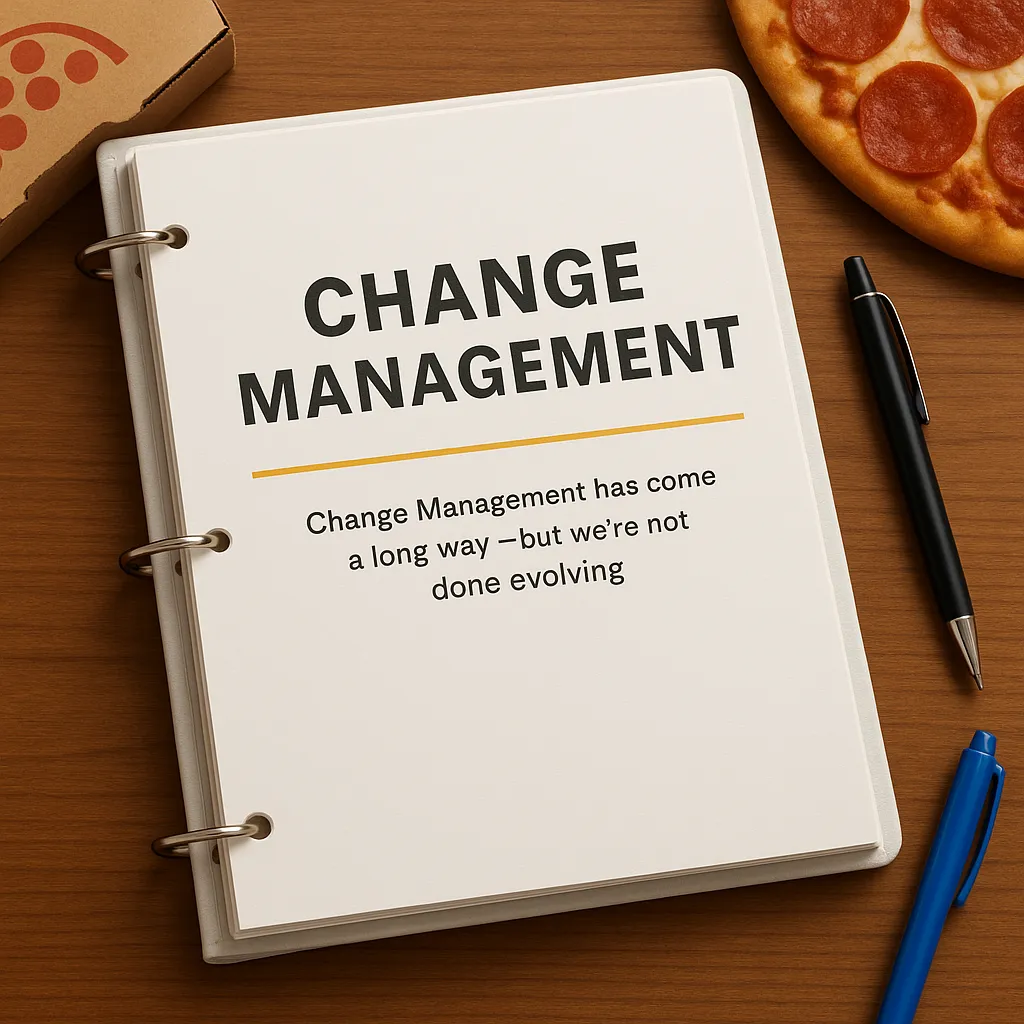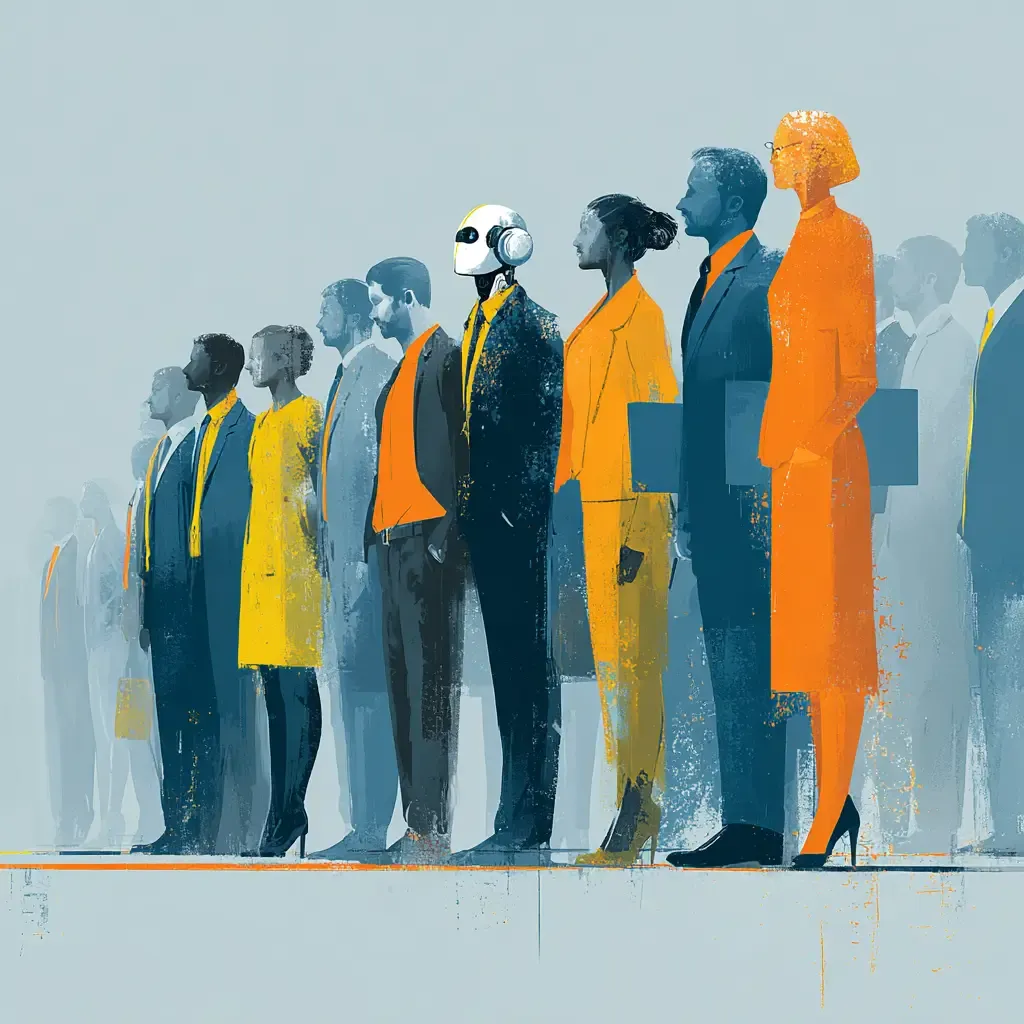Change Management has come a long way—but we're not done evolving.
The Early Days: Pizza, Pens, and Pep Talks
When I first stepped into the world of change management over 25 years ago, the job didn’t come with much respect—or clarity. If you said you were on the change team, someone might ask if you could order pizzas for the kickoff meeting. Or help pick out the branded mugs and stress balls for the project launch.
And if you wanted to “train people on change,” your best bet was to leave a copy of Who Moved My Cheese? on everyone’s desk and hope they took the hint.
That was the era of cheerleading and charm campaigns, not strategy.
Book Drops and Best Intentions
In the early 2000s, “book drops” were a staple. Someone on the leadership team would discover a business book, get inspired, and drop 500 copies across the organization. That was your change enablement. Reading was optional; reflection and reinforcement were non-existent. But the boxes got emptied, so… progress?
It’s easy to laugh at now, but this wasn’t incompetence—it was immaturity. The profession hadn’t yet found its footing. Most organizations didn’t know what change management really was. And many of us in the field were figuring it out as we went.
The Maturation of a Discipline
Today, change management is finally legit.
We have:
- Codified methodologies
- Research-backed models like ADKAR and Kotter
- Certifications and career paths
- Dedicated roles and departments
- Executive sponsorship (at least sometimes)
We’re not just cheerleaders anymore. We’re risk mitigators. Strategy accelerators. Force multipliers.
Smart organizations understand that navigating change is a competitive advantage—and change practitioners are their guides.
But Let’s Not Get Comfortable
Here’s the trap: thinking we’ve arrived.
That our work is done. That maturity = mastery.
The truth? Too much of the field still leans on 1990s-era playbooks:
- Linear processes in a nonlinear world
- Templates for the sake of templates
- Training as the default intervention
- Communication as a one-way broadcast
Meanwhile, the world has moved on.
The Next Evolution
To stay relevant, we must look beyond our traditional toolkit and steal shamelessly from other disciplines:
- Customer Experience (CX) shows us how to operationalize empathy at scale.
- Behavioral science helps us design nudges instead of relying on willpower.
- AI is already reshaping workflows, decision-making, and even employee mindsets.
- Agile and product thinking offer smarter ways to iterate and co-create with stakeholders.
The future of change management isn’t about defending our turf—it’s about expanding our value.
What to Do Instead
If you're a change practitioner or leader, ask yourself:
- Where are we still running playbooks from 2003?
- Are our interventions designed for today's velocity and complexity?
- Have we built real partnerships with CX, EX (employee experience), and data teams—or are we still siloed?
- Are we leveraging AI to augment our practice—or avoiding it out of fear?
It's time to be honest about where we’re coasting and where we’re leading.
Final Thought
Change management has come a long way from ordering pizzas and handing out pens. But we’re not done yet. The next chapter of our evolution isn’t just about being respected—it’s about being indispensable. And that means staying curious, staying current, and refusing to settle.
Onward.
ChangeGuild: Power to the Practitioner™
Recommended Reading
If you enjoyed this article, you might also find these helpful:

If your team is still stuck in old-school change practices, let’s fix that. We offer coaching and consulting to modernize your approach—drawing on CX, behavioral science, and AI to help you lead real transformation.
This post is free, and if it supported your work, feel free to support mine. Every bit helps keep the ideas flowing—and the practitioners powered. [Support the Work]









